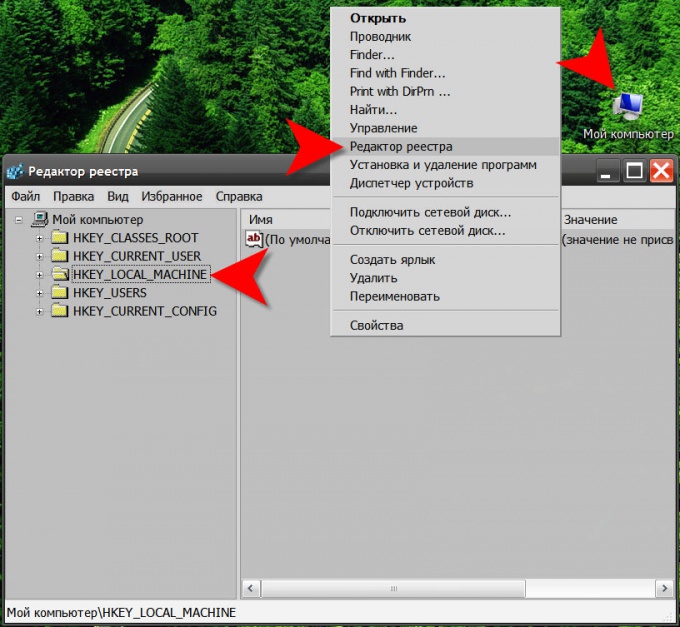Instruction
1
Use to make changes to the Windows registry is a specialized editor that is available in all versions of the OS. To open it you can, for example, through the context menu opened by clicking with the right mouse button on the icon "My computer" on the desktop. If the display this shortcut is disabled in the settings of your OS, then the same context menu, you can see if you click the same right-click "Computer" in the menu on the "start" button. To choose it is necessary the string "registry Editor". There is an alternative method - press the key combination WIN + R to open the run dialog programs, then type regedit and press Enter.
2
Expand is placed in the left panel of the editor folder to navigate through the registry. The interface is similar to standard Windows Explorer, each folder is mapped to the registry key, which is placed inside its subkeys. This entire structure is called "tree", separate sections and subsections - "bushes" or "branches" and "keys". HKEY_LOCAL_MACHINE you will see in the left pane immediately, as it is one of the five main ("root") branches of the registry. To denote the major sections often use abbreviated names for the HKEY_LOCAL_MACHINE in this reduction is the abbreviation HKLM.
3
Before you make any changes to the branch HKEY_LOCAL_MACHINE or any other, save a backup copy of the current state of the system registry. The editor does not have undo the changes and all changes take place directly in the "live" registry, that is, the editor asks the question of whether we should save changes, they are saved immediately. So the mistake of editing here it is possible to correct only "in memory", but if something is missed, the consequences can be severe, up to complete loss of functionality of the OS. Function create file to restore the registry, look under "File" - the corresponding item is "Export". And the restore function of the registry from this file in the same section is called "Import".


